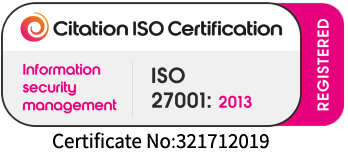
When playing lawn tennis, although the Wimbledon Championships fever might make you feel like a power hitter, considering a few exercises and techniques might save you a lot of post-game pain and tennis injuries. In this article, Prof Mo Imam, our Consultant Upper Limb Surgeon and a former tennis player himself, shares invaluable advice and tips on how to ace your serve with confidence while preventing shoulder injuries. Discover the essential guidelines to enhance your serve, protect your orthopaedic health, and ensure long-term bone and joint well-being.
Warm up and stretch before tennis
Before you step onto the court, it is crucial to warm up your body and stretch your muscles properly. Performing light aerobic exercises like jogging or jumping jacks will increase your heart rate and warm your entire body. Follow this with dynamic stretches that mimic the movements involved in serving, such as arm circles, shoulder rolls, and trunk rotations. Warming up and stretching properly will prepare your muscles and joints for the explosive movements required for a powerful serve.
Focus on proper tennis technique
Executing a powerful serve starts with mastering the correct technique. Begin by adopting a comfortable and balanced stance, ensuring your weight is evenly distributed. Use a continental grip or a grip variation that works best for you. Practise your toss, ensuring it is consistent and positioned slightly in front of your hitting shoulder. Focus on generating power from your legs, transferring the energy through your core, shoulder, elbow, and wrist. By using the proper technique, you can reduce the risk of strain and injury while maximising the power behind your serve.
Develop strength and stability
Building strength and stability in key muscle groups is vital for powerful serve and injury prevention. A strong and stable body will allow you to generate more power while reducing the risk of overuse injuries.
Strengthen your lower body to improve your leg drive and stability during the serve through:
- Squats
- Lunges
- Calf raises
Incorporate exercises that target your core to enhance rotational power and stability with:
- Planks
- Medicine ball throws
- Russian twists
Additionally, strengthen your shoulder and arm muscles with exercises like:
- Shoulder presses
- Bicep curls
- Triceps extension
Improve flexibility and mobility
Flexibility and mobility are crucial in executing a powerful serve and preventing injuries. Incorporate stretching exercises into your routine focusing on your shoulders, chest, back, and hips. Use exercises like shoulder stretches, pec stretches, and thoracic spine rotations to improve the flexibility and range of motion in these areas. Adequate flexibility and mobility will enable you to achieve a full range of motion during your serve and reduce stress on your joints and muscles.
Listen to your body!
Listening to your body and paying attention to any discomfort or pain during your serve is essential. If you experience persistent pain or discomfort in your shoulder, elbow, or any other joint, seeking medical attention is crucial. As experts in orthopaedics, we strongly advise consulting with a specialist who can evaluate your condition and provide appropriate guidance. Ignoring or pushing through pain can lead to serious injuries and long-term complications.
Practice smart and efficiently
Consistent practice is key to developing a powerful serve, but practising smart and efficiently is equally important. Focus on quality rather than quantity. Break down your serve into different components and work on them individually. Spend time on your toss, footwork, and racket path, gradually integrating them into a complete serve. Video analysis can be a useful tool to identify areas for improvement and track your progress. By practising with intention and purpose, you'll consistently refine your technique and hit powerful serves.
Mastering your two-hand backhand
Executing a two-hand backhand in tennis requires careful attention to technique and body mechanics to prevent injuries, improve shot accuracy and consistency, and gain a tactical advantage. Here are three important factors to consider:
Grip and hand placement:
Ensure you have a comfortable and firm grip on the racket handle. Typically, the dominant hand is placed on the bottom of the handle (e.g., right hand for right-handed players), with the non-dominant hand placed above it (e.g., left hand for right-handed players). The grip should allow you to generate power, maintain control, and ensure stability.
Body position and stance:
Your body position and stance play a significant role in executing a solid two-hand backhand. Stand with your feet shoulder-width apart, slightly staggered, and parallel to the baseline. Position your body sideways to the net, with your non-dominant side facing the net. Bend your knees slightly to provide a stable base, and rotate your shoulders and hips to generate power and maintain balance throughout the shot.
Swing path and follow-through:
The swing path and follow-through greatly impact the accuracy and consistency of your two-hand backhand. Initiate the swing by bringing the racket back with both hands, keeping it parallel to the ground. Swing forward and aim to make contact with the ball in front of your body and slightly to the side. Keep your eyes on the ball, focus on hitting it cleanly with the middle of the racket strings, and follow through by extending your arms forward. Allow the racket to finish high over your non-dominant shoulder.
Consistent practice and proper technique are essential for mastering the two-hand backhand. Consider seeking guidance from a tennis coach or instructor who can provide personalised feedback and additional tips to improve your shot.
The importance of tennis injury prevention
A powerful serve can be a formidable weapon on the tennis court, but it should never come at the expense of your health. Tennis injury prevention is crucial as it:
- Preserves performance and consistency
- Prolongs athletic careers
- Minimises pain and discomfort
- Reduces medical costs and time off
- Enhances overall health and well-being
- Promotes long-term musculoskeletal health
By prioritising injury prevention strategies, you can maintain a consistent training regimen, extend your playing career, enjoy the sport without unnecessary pain, lower financial burdens, and ensure the longevity of your musculoskeletal well-being.
By following the expert advice shared by Prof Mo Imam, you can minimise the risk of tennis injuries, improve your serve, and safeguard your orthopaedic health on the court. Remember to warm up and stretch before playing, focus on proper technique, develop strength and stability, improve flexibility and mobility, listen to your body, practice smartly and efficiently, and pay attention to injury prevention. By incorporating these strategies into your tennis routine, you'll enhance your performance, prevent injuries, and promote long-term bone and joint health.
If you would like to book an appointment with our Upper Limb Orthopaedic Surgeons, please call us on 020 8949 9020 or fill in our online form:












